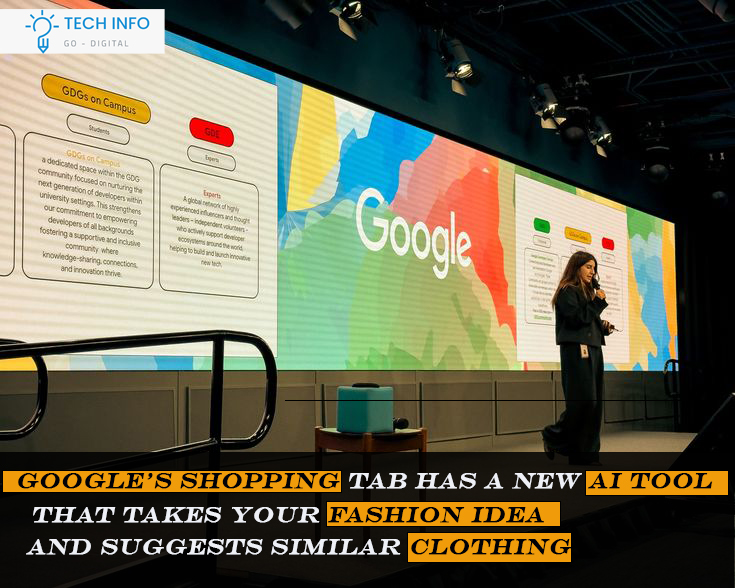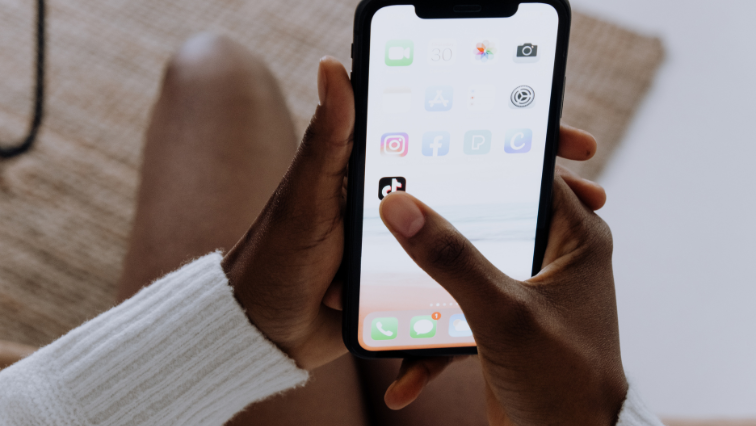Google fixes Chrome zero-day security flaw used in hacking campaign targeting journalists

Google fixes Chrome zero-day security flaw used in hacking campaign targeting journalists Introduction In an era where digital security is paramount, tech giants like Google continuously work to patch vulnerabilities in their software. Recently, Google addressed a critical zero-day security flaw in its Chrome browser that was actively exploited in a hacking campaign targeting journalists. This incident highlights the growing risks faced by media professionals and the importance of timely software updates. In this blog post, we will explore: Understanding Zero-Day Vulnerabilities A zero-day vulnerability refers to a security flaw that is unknown to the software vendor but is being exploited by hackers. Since developers have “zero days” to fix the issue before attacks begin, these vulnerabilities are highly dangerous. Zero-day exploits are often used in targeted attacks against activists, government officials, and journalists—individuals who handle sensitive information. In this case, the Chrome flaw allowed attackers to execute malicious code on victims’ devices, potentially stealing data or installing spyware. Details of the Chrome Zero-Day Exploit Google’s Threat Analysis Group (TAG) identified the exploit, tracked as CVE-2023-5217, as a buffer overflow vulnerability in Chrome’s VP8 video codec. Attackers used crafted video files to trigger the flaw, leading to remote code execution (RCE) when users visited malicious websites. How the Attack Worked: This attack was part of a broader surveillance campaign, likely conducted by state-sponsored hackers aiming to silence or monitor journalists. Why Journalists Were Targeted ournalists often investigate sensitive topics, making them prime targets for cyberattacks. Hackers may seek to: Past campaigns, such as those involving Pegasus spyware, have shown how digital threats can undermine press freedom. Google’s Response and Patch Upon discovering the exploit, Google swiftly released an emergency update—Chrome version 116.0.5845.187—to patch the vulnerability. The company also: Users were urged to update Chrome immediately or enable auto-updates to stay protected. How to Protect Yourself from Zero-Day Attacks While software patches help, users must adopt proactive security measures: 1. Keep Software Updated 2. Use Advanced Security Features 3. Be Wary of Phishing Attempts 4. Use Strong Authentication 5. Monitor for Unusual Activity The Bigger Picture: Cybersecurity and Press Freedom This incident underscores the growing intersection between cybersecurity and human rights. Governments and tech companies must collaborate to: Organizations like the Committee to Protect Journalists (CPJ) and Access Now advocate for better protections for media workers in the digital space. The Vulnerability Explained The recently patched flaw (CVE-2023-5217) was a high-severity buffer overflow vulnerability in Chrome’s VP8 video codec implementation. This technical weakness allowed: Security researchers at Google’s Threat Analysis Group (TAG) discovered the flaw being actively exploited in the wild before a fix was available – the definition of a zero-day vulnerability. Protection Recommendations For Journalists & High-Risk Users For All Users The Bigger Threat Landscape This incident highlights several worrying trends: Cybersecurity experts warn that media professionals now require specialized protection similar to government officials What’s Next?
Jonah Peretti helped shaped digital media — can he do it again?

Jonah Peretti Helped Shaped Digital Media — Can He Do It Again? In the ever-evolving landscape of digital media, few names stand out as prominently as Jonah Peretti. As the co-founder of The Huffington Post and the founder of BuzzFeed, Peretti has been a driving force behind some of the most influential media platforms of the 21st century. His innovative approach to content creation, distribution, and monetization has reshaped how we consume news, entertainment, and information online. But as the digital media industry faces new challenges—ranging from algorithm changes to shifting consumer habits—many are wondering: Can Jonah Peretti reinvent the wheel once again? The Rise of a Digital Media Pioneer’ Jonah Peretti’s journey into the world of digital media began in the early 2000s, a time when the internet was still finding its footing as a mainstream medium. A graduate of MIT’s Media Lab, Peretti had a unique understanding of how technology and media could intersect to create something entirely new. His early experiments with viral content—such as the infamous Nike email exchange—demonstrated his knack for understanding what makes people click, share, and engage. In 2005, Peretti co-founded The Huffington Post with Arianna Huffington, Kenneth Lerer, and Andrew Breitbart. The platform quickly became a trailblazer in the digital news space, blending traditional journalism with user-generated content and a strong emphasis on social sharing. The Huffington Post was one of the first major outlets to recognize the power of SEO and social media in driving traffic, setting the stage for the modern era of digital publishing. But Peretti’s true magnum opus came in 2006, when he founded BuzzFeed. Initially conceived as a lab for viral content, BuzzFeed evolved into a media powerhouse, known for its listicles, quizzes, and cat videos, as well as its groundbreaking investigative journalism. Peretti’s vision was to create a media company that was native to the internet, one that understood the nuances of online behavior and leveraged them to build a massive audience. The BuzzFeed Blueprint At the heart of Peretti’s success with BuzzFeed was his ability to anticipate and adapt to the changing dynamics of the internet. He understood that the key to winning in the digital space was not just about producing great content, but also about understanding how that content would be discovered and shared. This led to the development of BuzzFeed’s data-driven approach to content creation, where analytics played a central role in shaping editorial decisions. Peretti also recognized the importance of platform diversification. While many traditional media companies were slow to embrace social media, BuzzFeed was an early adopter, building a presence on Facebook, Twitter, Instagram, and later, TikTok. This multi-platform strategy allowed BuzzFeed to reach audiences where they were, rather than relying solely on its own website for traffic. Another hallmark of Peretti’s approach was his willingness to experiment with new formats and business models. BuzzFeed News, for example, demonstrated that a digital-native outlet could produce award-winning journalism, while BuzzFeed’s e-commerce ventures, like Tasty, showed how media companies could monetize their content in innovative ways. Challenges in the Digital Media Landscape Despite his many successes, Peretti’s journey has not been without its challenges. The digital media industry is notoriously volatile, and even giants like BuzzFeed have struggled to navigate the shifting tides. The rise of platform algorithms, particularly Facebook’s frequent changes to its News Feed, has made it increasingly difficult for media companies to rely on social media for traffic. At the same time, the decline of traditional advertising revenue has forced many outlets to rethink their business models. BuzzFeed itself has faced its share of setbacks. In 2019, the company laid off 15% of its workforce, citing the need to streamline operations and focus on profitability. The COVID-19 pandemic further exacerbated these challenges, as advertisers slashed budgets and consumer behavior shifted dramatically. In 2021, BuzzFeed went public through a SPAC merger, but its stock performance has been underwhelming, reflecting broader skepticism about the sustainability of digital media businesses. Can Peretti Do It Again? Given these challenges, the question remains: Can Jonah Peretti reinvent digital media once again? The answer lies in his ability to adapt to the current landscape while staying true to his core principles of innovation and experimentation. One area where Peretti has already shown promise is in the realm of AI and technology. BuzzFeed has been an early adopter of AI tools, using them to generate content, personalize recommendations, and streamline operations. In 2023, BuzzFeed announced a partnership with OpenAI to integrate ChatGPT into its content creation process, signaling Peretti’s commitment to staying at the forefront of technological innovation. Another potential avenue for growth is the shift toward subscription-based models. While BuzzFeed has traditionally relied on advertising revenue, Peretti has expressed interest in exploring paid content offerings. This could include premium newsletters, exclusive video content, or membership programs that provide added value to loyal readers. Peretti’s track record also suggests that he is not afraid to pivot when necessary. Just as he transformed BuzzFeed from a viral content lab into a full-fledged media company, he could once again redefine what a digital media business looks like in the 2020s. This might involve deeper integration with emerging platforms, new forms of interactive content, or even ventures into entirely new industries. The Future of Digital Media The digital media landscape is more competitive and complex than ever before, but Jonah Peretti’s influence cannot be underestimated. His ability to anticipate trends, embrace new technologies, and connect with audiences on a deeply personal level has made him one of the most important figures in the industry. As he looks to the future, Peretti will need to balance the lessons of the past with the demands of the present. The challenges are significant, but so are the opportunities. With his unique blend of creativity, technical expertise, and entrepreneurial spirit, there is every reason to believe that Jonah Peretti can once again shape the future of digital media. In a world where change is the only constant, Peretti’s greatest strength may be his willingness to embrace uncertainty and turn it into opportunity. Whether through AI-driven content, innovative business models, or entirely new platforms, one thing is clear: Jonah Peretti is not done making waves in the digital
ChatGPT on macOS can now directly edit code

ChatGPT on macOS: Revolutionizing Code Editing In the ever-evolving world of technology, the integration of artificial intelligence into our daily workflows has become increasingly seamless. One of the most exciting developments in recent years is the ability of AI-powered tools like ChatGPT to directly edit code on macOS. This feature not only enhances productivity for developers but also opens up new possibilities for content creators, bloggers, and tech enthusiasts. In this blog, we’ll explore how ChatGPT on macOS is transforming the way we edit code, create content, and differentiate ourselves from the vast sea of information available on Google The Rise of AI in Code Editing Traditionally, code editing has been a manual process, requiring developers to write, debug, and optimize code line by line. While Integrated Development Environments (IDEs) have made this process more efficient, they still rely heavily on human input. Enter ChatGPT, an AI-powered tool that can now directly edit code on macOS. This capability is a game-changer for developers, as it allows for real-time code suggestions, error detection, and even automated code generation. How ChatGPT Enhances Code Editing on macOS How ChatGPT Can Help You Create Unique Content Differentiating Your Content from Google With billions of web pages indexed by Google, it’s easy for your content to get lost in the noise. Here are some strategies to ensure that your blog stands out:
Google’s Shopping tab has a new AI tool that takes your fashion idea and suggests similar clothing

In the ever-evolving world of e-commerce, Google has once again proven its ability to stay ahead of the curve with the introduction of a groundbreaking AI-powered fashion tool on its Shopping tab. This innovative feature allows users to take their fashion ideas and receive suggestions for similar clothing items, revolutionizing the way we shop online. In this blog, we’ll dive deep into how this tool works, its potential impact on the fashion industry, and why it’s a game-changer for both consumers and retailers. What is Google’s New AI Fashion Tool? Google’s new AI fashion tool is a feature integrated into the Google Shopping tab that leverages advanced artificial intelligence and machine learning algorithms to help users find clothing items that match their style preferences. Whether you’re looking for a specific type of dress, a pair of shoes, or even a unique accessory, this tool can analyze your input—be it a description, an image, or even a rough sketch—and provide you with a curated list of similar items available for purchase online. The tool is designed to make online shopping more intuitive and personalized. Instead of spending hours scrolling through countless product listings, users can now get instant recommendations tailored to their tastes. This not only saves time but also enhances the overall shopping experience by making it more engaging and efficient. How Does It Work? The AI fashion tool operates on a combination of image recognition, natural language processing (NLP), and deep learning technologies. Here’s a breakdown of how it works: Why This Tool is a Game-Changer How It Differs from Google’s Existing Features While Google Shopping has long been a go-to destination for online shoppers, the new AI fashion tool sets itself apart in several ways: Potential Impact on the Fashion Industry The introduction of Google’s AI fashion tool has the potential to reshape the fashion industry in several ways: Challenges and Limitations While the AI fashion tool is undoubtedly impressive, it’s not without its challenges:
How to Talk to Google Gemini from Your iPhone’s Lock Screen

In today’s fast-paced world, convenience and efficiency are key. Imagine being able to interact with one of the most advanced AI models, Google Gemini, directly from your iPhone’s lock screen. No need to unlock your phone, open an app, or type out long queries—just speak, and Gemini responds. This seamless integration of AI into our daily lives is no longer a futuristic dream; it’s here, and it’s revolutionizing how we interact with technology. In this blog, we’ll explore how you can talk to Google Gemini from your iPhone’s lock screen, the benefits of this feature, and what it means for the future of AI and mobile technology. What is Google Gemini? Before diving into the lock screen functionality, let’s briefly introduce Google Gemini. Gemini is Google’s next-generation AI model, designed to provide advanced conversational capabilities, real-time information retrieval, and personalized assistance. Think of it as a smarter, more intuitive version of Google Assistant, capable of handling complex queries, generating creative content, and even assisting with tasks like coding, writing, and planning. Gemini is built on cutting-edge AI technology, making it one of the most powerful tools for personal and professional use. Its integration into mobile devices, especially iPhones, marks a significant step forward in making AI accessible to everyone. How to Talk to Google Gemini from Your iPhone’s Lock Screen Talking to Google Gemini from your iPhone’s lock screen is surprisingly simple. Here’s a step-by-step guide to get started: 1. Ensure Your iPhone is Updated Make sure your iPhone is running the latest version of iOS. Google Gemini’s lock screen functionality relies on the latest software updates to ensure smooth integration. 2. Download the Google Gemini App Head to the App Store and download the official Google Gemini app. If you already have it, ensure it’s updated to the latest version. 3. Enable Lock Screen Access Open the Google Gemini app and navigate to the settings menu. Look for the option labeled “Lock Screen Access” or “Voice Activation from Lock Screen.” Toggle this setting on. 4. Customize Your Preferences You can customize how Gemini interacts with you from the lock screen. For example, you can choose whether it responds with voice feedback or text, adjust the volume, or set specific triggers like “Hey Gemini” to activate the AI. 5. Start Talking Once everything is set up, simply wake your iPhone (by tapping the screen or pressing the side button) and say your command. For example, you can ask, “Hey Gemini, what’s the weather today?” or “Gemini, set a reminder for my meeting at 3 PM.” Benefits of Using Google Gemini from Your Lock Screen The ability to interact with Google Gemini directly from your iPhone’s lock screen offers numerous benefits: 1. Instant Access to Information No more fumbling to unlock your phone or open an app. Whether you need quick answers, directions, or updates, Gemini is just a voice command away. 2. Hands-Free Convenience This feature is a game-changer for multitaskers. Whether you’re cooking, driving, or working out, you can get things done without touching your phone. 3. Enhanced Productivity From setting reminders and sending messages to drafting emails and managing your schedule, Gemini streamlines your daily tasks, saving you time and effort. 4. Personalized Assistance Gemini learns from your interactions, offering tailored responses and suggestions based on your preferences and habits. 5. Improved Accessibility For individuals with disabilities or those who struggle with typing, voice-activated AI provides a more inclusive way to interact with technology. The Future of AI and Mobile Technology The integration of Google Gemini into the iPhone’s lock screen is just the beginning. As AI continues to evolve, we can expect even more seamless and intuitive interactions between humans and machines. Here are some possibilities for the future: 1. Deeper Integration with Smart Devices Imagine controlling your smart home, car, or wearable devices directly from your lock screen using Gemini. The possibilities are endless. 2. Advanced Personalization Future AI models could predict your needs before you even ask, offering proactive assistance based on your routines and preferences. 3. Enhanced Security Features As AI becomes more integrated into our lives, security will remain a top priority. We can expect advanced biometric authentication and encryption to protect our data. 4. Cross-Platform Compatibility Google Gemini could soon work seamlessly across all your devices, from your iPhone to your laptop, smartwatch, and even your TV. 5. AI-Powered Creativity From generating art and music to helping you write stories or design presentations, AI will play a bigger role in fostering creativity. Tips for Maximizing Your Experience with Google Gemini To get the most out of Google Gemini on your iPhone’s lock screen, follow these tips: Conclusion The ability to talk to Google Gemini from your iPhone’s lock screen is a testament to how far AI and mobile technology have come. It’s not just about convenience; it’s about transforming the way we interact with the world around us. As AI continues to advance, features like this will become even more integral to our daily lives, making tasks easier, faster, and more enjoyable. So, why wait? Set up Google Gemini on your iPhone today and experience the future of AI-powered assistance right at your fingertips—or rather, right from your lock screen.
The Uncertain Future of TikTok in the U.S. and Who Might Step In to Buy It – 2025

Future TikTok has become a cultural phenomenon, amassing millions of users worldwide. However, in recent years, the app’s future in the United States has been anything but certain. From national security concerns to legal challenges, TikTok has faced intense scrutiny from U.S. lawmakers. In this post, we’ll explore what’s at stake for in the U.S., and who the potential buyers are that could step in to acquire the app. TikTok’s Troubled Relationship with the U.S. Government TikTok’s uncertain future in the United States stems largely from concerns about its Chinese parent company, ByteDance. U.S. lawmakers and officials have raised national security concerns, citing the app’s potential to collect vast amounts of data on American users, which could be accessed by the Chinese government. The U.S. government has also warned tha influence could be used to spread propaganda, manipulate political discourse, or even surveil users. As a result, several proposals have been made to either ban the app entirely or force it to sell its U.S. operations to a domestic company. These legal and political pressures have left in a precarious position, as the company attempts to navigate an increasingly hostile environment. The People Who Want to Buy TikTok Given the mounting pressure on TikTok, a number of companies and individuals have expressed interest in purchasing the app’s U.S. operations. But who are the potential buyers, and why do they want to get their hands on TikTok? What’s at Stake for TikTok’s Future in the U.S.? TikTok’s future in the U.S. is far from secure, and the looming possibility of a sale or a ban is a constant threat. If TikTok is forced to sell its U.S. operations, it will have to find a buyer that can meet the security concerns of the U.S. government, while also continuing to operate as a profitable and innovative social media platform. However, even if TikTok successfully navigates the regulatory challenges, its future in the U.S. may still be in jeopardy. There are ongoing discussions in Congress about potential bans, and competition with other social media platforms is intensifying. The outcome of these regulatory battles will ultimately determine whether TikTok can continue to thrive in the U.S., or whether it will be forced to leave the American market entirely. Conclusion TikTok’s uncertain future in the U.S. remains one of the most talked-about issues in tech and media today. With mounting pressure from lawmakers, potential buyers are stepping in to take a shot at acquiring the app and securing its place in the American market. Whether or notwill be able to avoid a ban or find a buyer that can meet both government and user expectations remains to be seen. One thing is clear: TikTok’s journey in the U.S. is far from over, and it will continue to shape the social media landscape for years to come. By understanding the people and companies who are vying to purchase TikTok, we can gain valuable insight into what the app’s future may look like in the United States.

